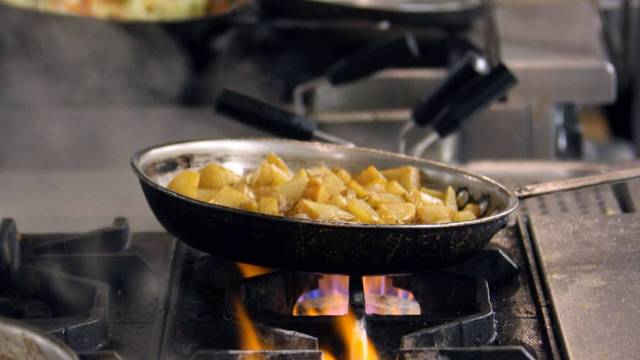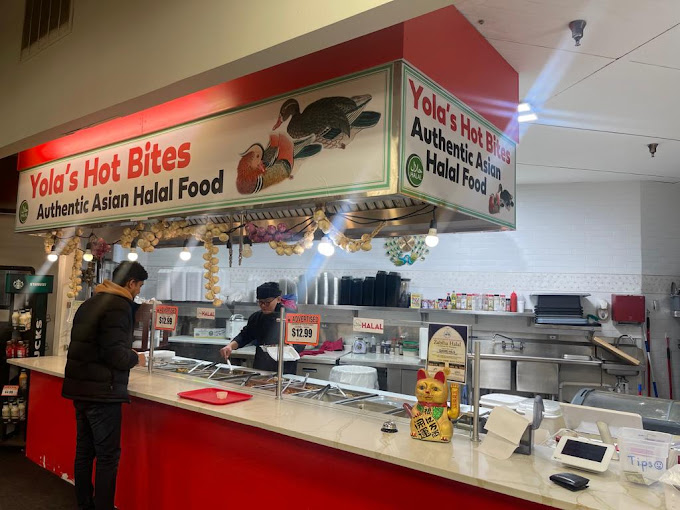Savor Authentic Oriental Cuisine With a Pan-Asian Twist for a Cooking Experience
Embarking on a cooking trip with authentic Asian food, boosted with a Pan-Asian spin, uses a distinct opportunity to discover the abundant tapestry of flavors that define the area's varied culinary traditions. As you ponder these enticing recipes, think about the social narratives and historic influences that form them, each bite providing a tale waiting to be found. Fine dining experience Islamabad.

Exploring Pan-Asian Tastes
In the realm of international gastronomy, Pan-Asian cuisine stands out for its remarkable variety and the harmonious interaction of tastes from different Eastern cultures. This culinary strategy celebrates the special ingredients and rich practices discovered across the continent, developing a tapestry of tastes that is both rewarding and fascinating. Secret to Pan-Asian food is its capacity to stabilize different flavors-- sweet, salted, spicy, and sour-- while highlighting the freshness and top quality of each component.
From the umami-rich soy sauce of Japan to the fiery chili peppers of Thailand, Pan-Asian food provides a comprehensive palette of tastes. These components are usually combined in innovative ways, boosting dishes with layers of complexity. For example, making use of aromatic herbs such as lemongrass and cilantro, common in Vietnamese and Thai cuisine, adds a refreshing illumination to dishes, while the unification of coconut milk provides a creamy, rich structure.
The focus on fresh fruit and vegetables and aromatic seasonings guarantees that each dish is not just a feast for the palate yet likewise for the detects. Pan-Asian cuisine welcomes restaurants to start a cooking trip, discovering the substantial and differed landscapes of Oriental gastronomy with every bite.
Combination Meals to Try
While Pan-Asian cuisine is commemorated for its conventional tastes, the contemporary cooking landscape is progressively embracing combination dishes that mix these timeless aspects with impacts from other regions. This ingenious method not just honors the rich heritage of Eastern cookeries but also presents novel preference experiences that interest modern tastes.
A prime instance of such a fusion recipe is the Korean-Mexican taco, where seasoned bulgogi beef is covered in a warm tortilla, topped with kimchi and a spicy gochujang-infused salsa. This combination weds the bold, full-flavored flavors of Korea with the lively, fresh elements of Mexican cuisine. In a similar way, sushi burritos have actually gotten popularity, integrating the fragile artistry of Japanese sushi with the hearty, hand-held comfort of a burrito, commonly featuring fusion components like tempura shrimp and avocado with a drizzle of wasabi mayo.
An additional noteworthy meal is Thai curry ramen, which instills the velvety, aromatic spices of Thai curry right into the soothing brew of conventional Japanese ramen, creating an unified blend that entices the senses. These fusion dishes expand beyond mere novelty; they represent a cooking discussion in between societies, motivating exploration and advancement worldwide of Pan-Asian cuisine.
Crucial Ingredients and Flavors
To truly value Pan-Asian cuisine, one should understand the essential active ingredients and seasonings that develop its foundation. This varied cooking style draws from an abundant tapestry of Oriental customs, using an unified mix of textures and tastes.
Aromatic components are essential, with ginger, garlic, and lemongrass being ubiquitous throughout different Pan-Asian dishes. These components provide a great smelling base that enhances the intricacy of flavors. Seasonings such as star anise, cardamom, and cinnamon present warmth and character, resembling influences from areas like China and India.

Cooking Strategies and Tips
Understanding the art of Pan-Asian food requires experience with its unique food preparation techniques, each adding to the vivid tapestry of look what i found flavors this culinary practice is commemorated for. Central to these methods is the stir-fry, a fast food preparation method that preserves the dietary stability and brilliant colors of active ingredients. Using a frying pan, the stir-fry technique permits even warmth distribution, necessary for achieving the characteristic texture and taste equilibrium of Pan-Asian recipes.
An additional basic technique is steaming, especially widespread in Chinese food. This mild approach keeps the natural flavors and nutrients of components, making it perfect for seafood and vegetables. Dumplings, a beloved staple, often gain from steaming, resulting in soft, delicious textures.
Cooking, also important, presents smoky depths to meals such as Oriental bulgogi or Japanese yakitori (asian fusion restaurant). This method often involves marinating ingredients, permitting tastes to penetrate deeply prior to cooking over an open fire or warmer
Finally, mastering the art of stabilizing flavors-- pleasant, sour, salted, bitter, and umami-- is essential. Properly layering these components can raise a dish from average to amazing, providing a facility and satisfying cooking experience that symbolizes the essence of Pan-Asian cuisine.
Dining Experiences Worldwide
Throughout the globe, Pan-Asian cuisine uses an unmatched eating experience, celebrated for its abundant tapestry of flavors and dynamic presentations. This cooking phenomenon has actually transcended cultural boundaries, recording the hearts and tastes of food enthusiasts worldwide. In multicultural cities fresh York, London, and Sydney, Pan-Asian restaurants function as fusions where culinary practices from Thailand, Japan, China, pub food near me and beyond converge, giving diners with an eclectic mix of recipes that highlight the region's variety.
The worldwide charm of Pan-Asian food exists in its capability to supply both credibility and innovation. Chefs masterfully wed traditional ingredients such as lemongrass, soy sauce, and miso with contemporary strategies, leading to dishes that are both acquainted and refreshingly new. This combination allows diners to start a cooking trip that values heritage while welcoming modernity.
In addition, eating experiences are boosted via attentively created atmospheres that show the ethos of Pan-Asian looks. From minimal Japanese-inspired interiors to vibrant Thai-themed spaces, each dining establishment supplies a special atmosphere that matches the culinary offerings. Because of this, customers are not simply taking in a meal yet partaking in a cultural experience, making Pan-Asian dining an absolutely international phenomenon.
Conclusion
The expedition of Pan-Asian cuisine offers an extensive understanding of the complex interplay of tastes and cooking traditions throughout Asia. By accepting fusion recipes such as Thai curry ramen and sushi burritos, the cooking journey not just highlights the versatility of conventional ingredients yet also showcases cutting-edge contemporary techniques. This gastronomic experience, enriched by cooking approaches and vital seasonings, supplies an unique possibility to appreciate the multiculturalism and culinary virtuosity that define Pan-Asian cuisine on a worldwide range.
Beginning on a culinary journey via genuine Asian cuisine, boosted with a Pan-Asian twist, uses a distinct chance to explore the rich tapestry of tastes that specify the region's varied cooking traditions.In the realm of international gastronomy, Pan-Asian cuisine stands out for its exceptional variety and the harmonious interaction of tastes from various Oriental societies. Key to Pan-Asian cuisine is its capability to stabilize contrasting tastes-- pleasant, salty, spicy, and sour-- while highlighting the freshness and top quality of each ingredient.
